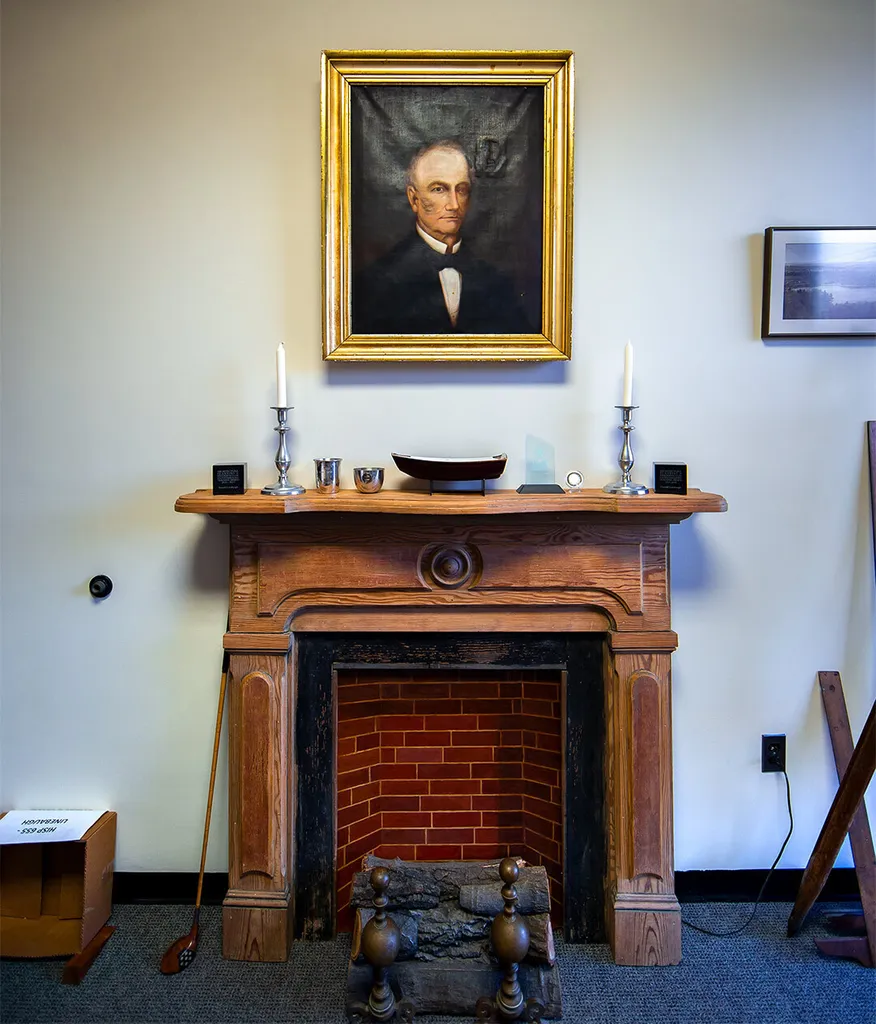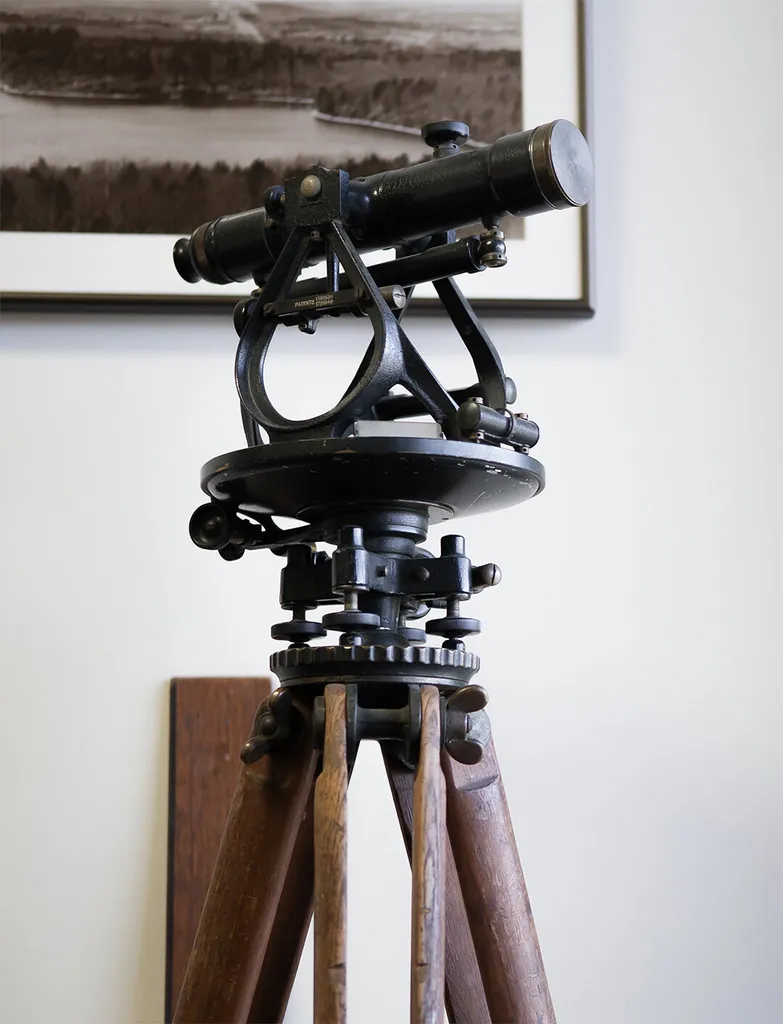- January 28, 2022
- By Karen Shih ’09
Editor’s note: This is the start of an occasional series offering a look inside some of the most interesting faculty and staff offices around campus. Think you have a cool workspace—or know someone’s that you’d like to recommend? Email kshih@umd.edu.
Walk down the cool concrete halls of the Architecture Building, and historic preservation Professor Don Linebaugh’s office feels like a warm oasis. With the glow and sounds of a crackling fire, a blue-plaid wingback chair perfect for reading and even a library ladder to reach shelf after shelf of books, it’s an old-fashioned gentleman’s study—if you ignore the laptop on the standing desk.
Linebaugh, an archaeologist of U.S. history for more than three decades, recently completed a three-year stint as interim dean of the School of Architecture, Planning and Preservation. He took Maryland Today on a tour of his office, sharing research artifacts and sentimental objects he’s collected over the years.

The mantel
Believed to be from an 1860s house in Richmond, Va., the wooden mantel brought a touch of home to his office when he came to UMD in 2004, Linebaugh said.
“One of my architecture students offered to paint the brick behind the fireplace, and then at a yard sale, I found these fake logs, which are fun. Faculty members used to come in when it was very cold and joke, ‘Let’s put our feet up and warm up!’”
The portrait
Despite its prominence in his office, Linebaugh doesn’t know who the man in the painting is. Based on some research, though, he thinks he could be a member of the Virginia House of Delegates in the late 19th century. The painting was left to him by a former officemate at the College of William and Mary who was an antiques dealer.
“He looks a bit like a stern Presbyterian minister—very fire and brimstone,” said Linebaugh. “He watches over me and stares down at the students which makes me feel like I’m a nice guy.”

The transit
A tool for land surveying, the transit, which measures vertical and horizontal angles, once belonged to Roland W. Robbins, the archaeologist who discovered and excavated Henry David Thoreau’s cabin at Walden Pond in 1945.
“I wrote my doctoral thesis on Robbins and on many of the projects he worked on. He had passed by the time I started, but his family gave me the transit. I’ve even used it! They have ones now that are completely digital and you push a button and it sends all the information you need to your phone. But this one still does the job.”

Gas lights
Linebaugh wrote the book “The Springfield Gas Machine,” illuminating what it took to create gas light for houses in the 1800s and early 1900s. On the middle shelf, he has original burners for the systems, including one in its original box, and a much more modern incarnation: a 3D-printed model he created with the help of Terrapin Works.
Woodworking hand tools
In Linebaugh’s vernacular architecture class, students learn up close the challenges of building structures by hand in the 18th century and earlier by creating a mortise and tenon joint: The mortise is a hole created in a piece of wood, and the tenon is a second piece of wood that fits into the hole.
“It takes the students two, two and a half hours to create one joint,” he said, using the hand tools shown on the bottom shelf. “And then I explain how there’s hundreds of these in one house!”
